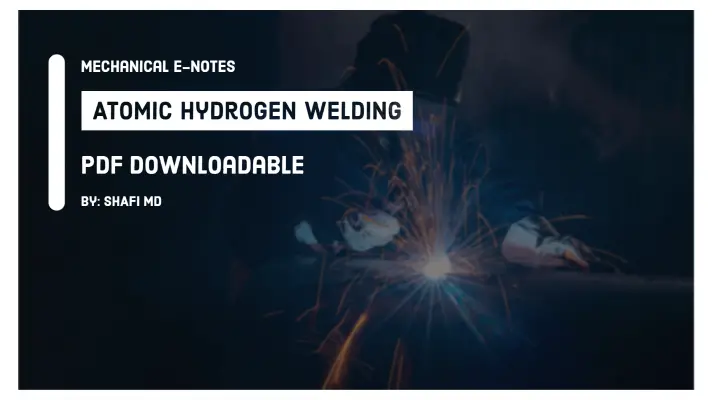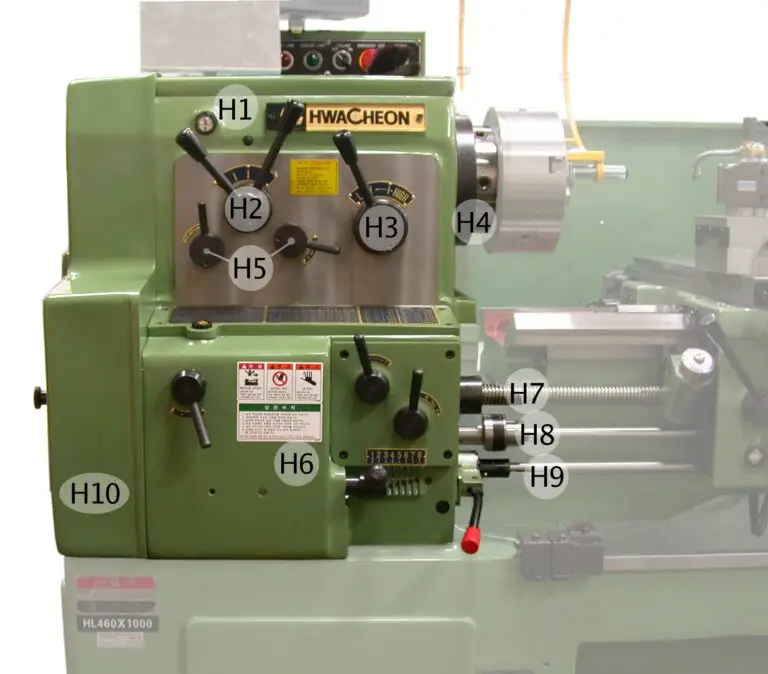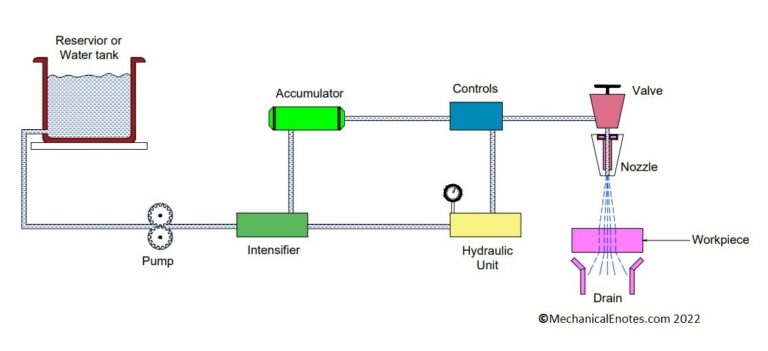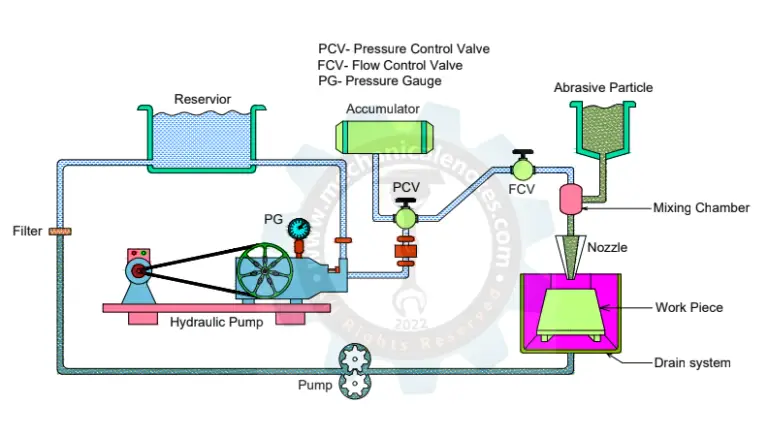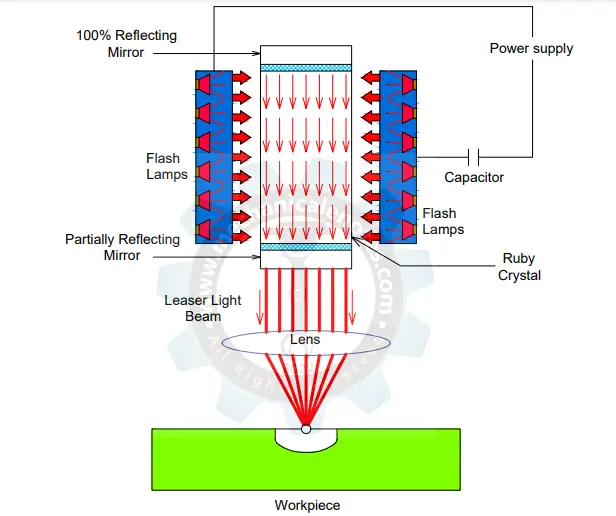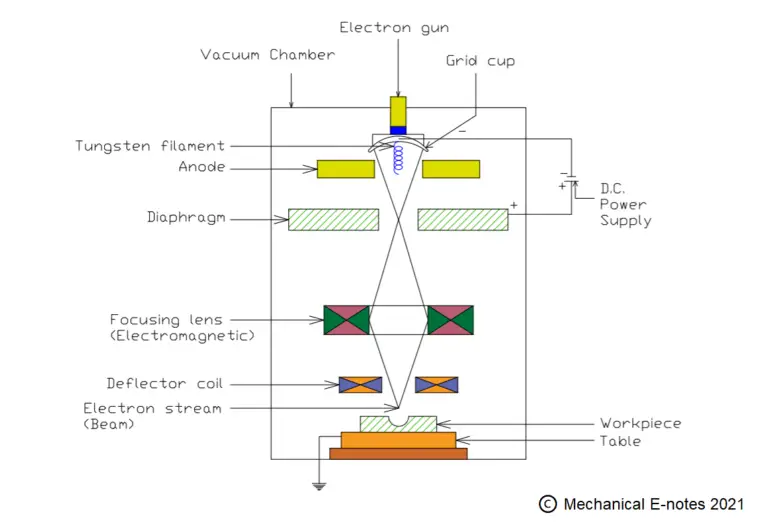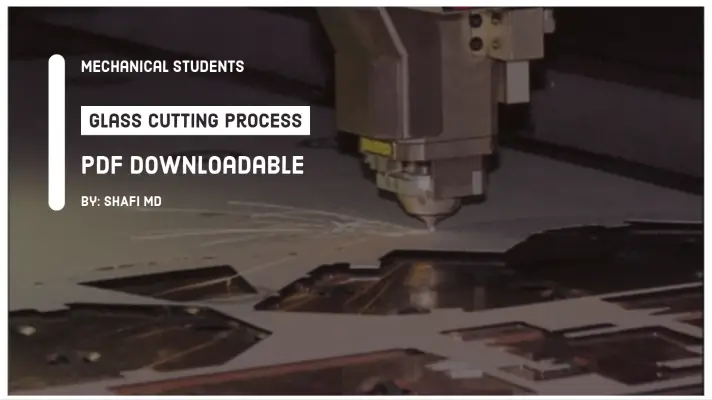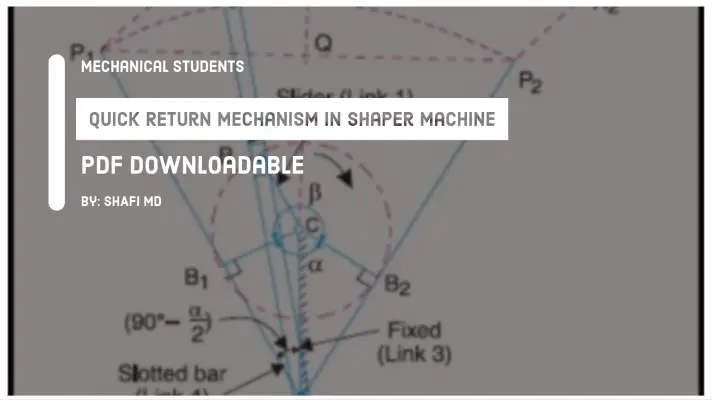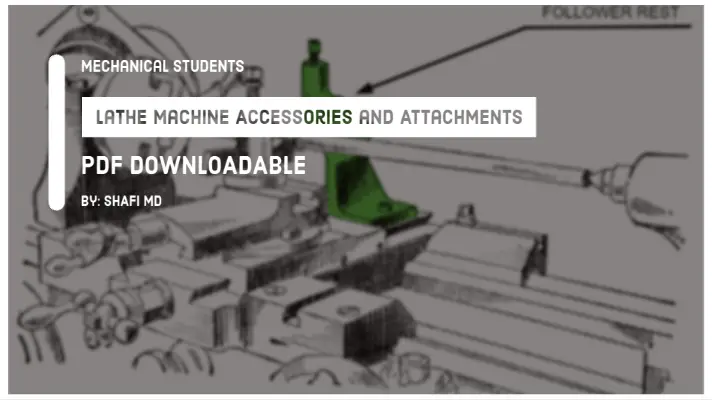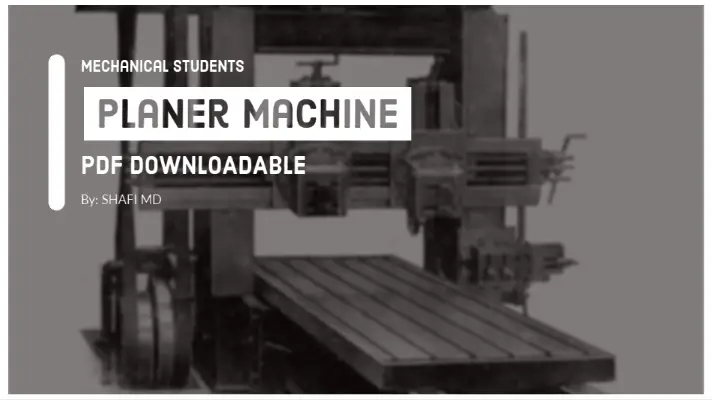Surface Grinding Machine: Definition, Parts, Working, Advantages, Disadvantages, and Applications [PDF]
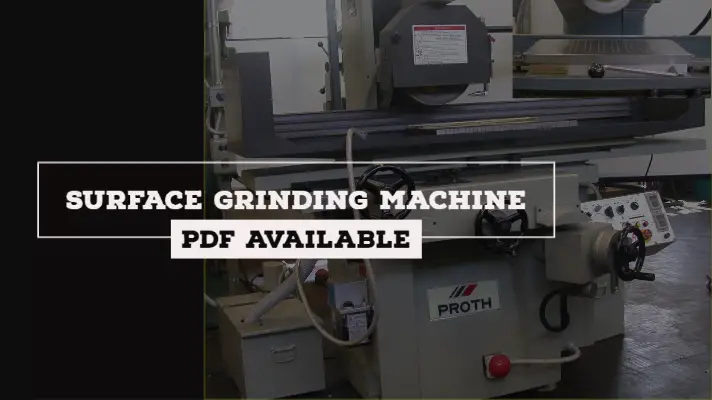
In the last session, we had discussed the Milling machine and Drilling Machine whereas in Today's session, we will discuss the Surface Grinding Machine along with its Definition, Parts, Working, Advantages, Disadvantages, and Applications in a detailed way.
But before that, we need to about the Grinding Process.
What is Grinding Process?
The grinding Process is the conventional finish machining Process used for producing a good surface finish on the components.
The abrasive particles present on the surface of a grinding wheel will be acting as a single-point cutting tool for removing the material from the workpiece.
The cubical or rectangular shape of the abrasive particles used in the grinding wheel will produce an approximate cross-section of the chip as triangular.
Surface Grinding Machine:
A surface Grinding Machine is a machine in which a grinding wheel is used as a cutting tool for removing the material from the surface of the workpiece. It is also called an abrasive machining process where abrasives are placed on the surface and corners of the grinding wheel so as to do the finishing process with much more accuracy.
Each Abrasive particle acts as a single-point cutting tool whereas the grinding wheel, full of abrasives called a multi-point cutting tool.
The grinding Process is one of the widely accepted finishing operations because of its material removal capacity in a very small size of chips ranging from 0.25 to 0.5 mm.
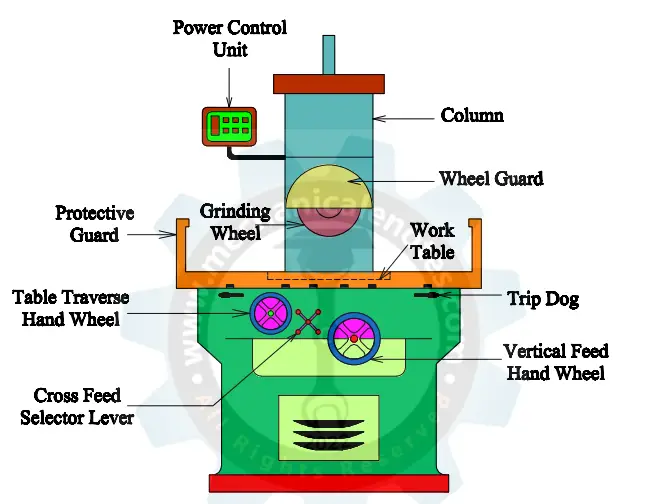
Parts of Surface Grinding Machine:
The basic parts of surface grinding machine are:
- Base
- Hand Traversing Wheel
- Cross Slide Handwheel
- Work Table
- Column
- Wheel Head
- Vertical Feed Hand Wheel
- Wheel Guard
- Abrasive Wheel
- Coolant
The functioning of the above Parts is as follows.
Base:
It acts as a support for the entire assembly and also acts as an absorber of vibrations.
Hand Traversing Wheel:
This traversing wheel is used to adjust the worktable in a longitudinal direction i.e. the worktable can be moved in forward and backward direction by means of a Hand Traversing Wheel.
Cross Slide Handwheel:
This hand wheel is used to adjust the worktable in an up and down direction so that the workpiece is to be placed in exact dimension w.r.t. the Grinding wheel.
Work Table:
It is the place where the workpiece is to be held properly.
Column:
It is the vertical column where the wheel head, Wheel Guard and Abrasive Wheel are mounted.
Wheel Head:
It is the compartment that has to be moved up and down so that the grinding wheel can touch the workpiece.
Vertical Feed Hand Wheel:
This hand wheel is used to provide the feed to the wheel head in a vertical direction which also indicates the depth of cut from the surface of the workpiece.
Wheel Guard:
It acts as a cover on the grinding wheel to avoid accidents.
Abrasive Wheel:
This is the main tool that is used to remove the material from the surface of the workpiece. It is coated with abrasives and thereby the accuracy obtained is very high.
Coolant:
The Coolant used in the Surface Grinding Process is used to cool the work region so that heat cannot be dissipated into the workpiece and grinding wheel.
For example, Water.
Working Principle of Surface Grinding Machine:
It uses a rotating abrasive wheel to remove the material from the surface of the workpiece to create a flat surface with a high surface finish.
The grinding wheel revolves on a spindle and the workpiece is mounted on a reciprocating table.
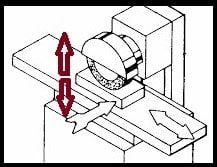
The reciprocating table moves in a forward or backward direction and the workpiece is adjusted w.r.t. the grinding wheel position.
When the power supply is given and a suitable speed is provided to the grinding wheel, the grinding wheel rotates on the surface of the workpiece to remove the material from the surface of the workpiece till high accuracy is obtained.
Aluminum oxide, diamond, silicon carbide, and cubic boron nitride (CBN) are four commonly used abrasive materials for the surface of the grinding wheels.
Advantages of Surface Grinding Machine:
The advantages of the Surface Grinding Machine are as follows.
- A high surface finish can be produced.
- It can produce a smooth surface on metallic and non-metallic surfaces also.
- High productivity
- No skilled operator is required.
- Manual and Automatic operations can be performed on it.
- The work can be easily performed on this machine.
Disadvantages of Surface Grinding Machine:
The disadvantages of Surface Grinding Machine are as follows.
- No grinding in the reverse direction.
- The grinding wheel is constantly degrading and requires much spindle power.
Applications of Surface Grinding Machine:
The applications of Surface Grinding Machine are as follows.
- It is useful for the grinding of various tools and cutters.
- It is used to finish flat surfaces and cylindrical surfaces.
- Abrasive milling can be performed on the workpieces.
- It is used in various industries and institutions.
This is the explanation of the Surface Grinding Machine. I hope you liked this paper. If you have any further doubts, don't forget to comment down below.
More Resources:
Radial Drilling Machine
Milling Machine
Lathe Machine
Drilling Machine
CNC Machine
References [External Links]:
- Grinding Operation - an overview | ScienceDirect Topics
- Chapter 17: Cutting Tool Applications — Grinding Methods


